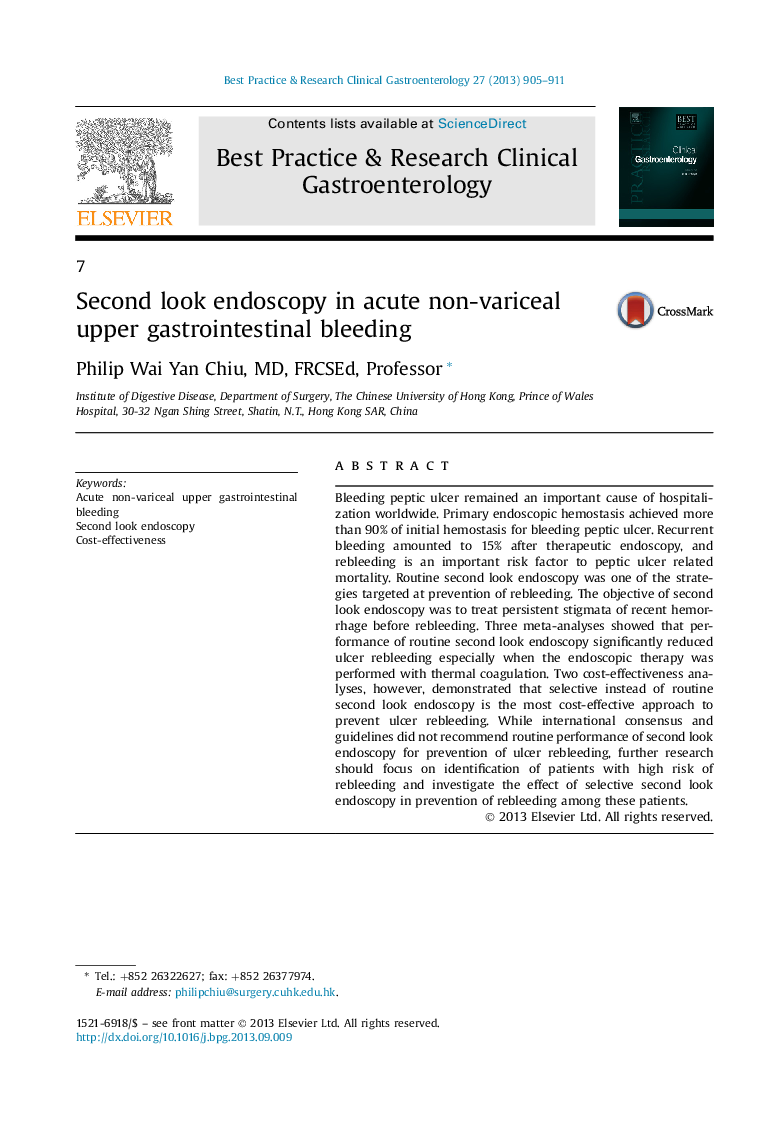| Article ID | Journal | Published Year | Pages | File Type |
|---|---|---|---|---|
| 6086431 | Best Practice & Research Clinical Gastroenterology | 2013 | 7 Pages |
Abstract
Bleeding peptic ulcer remained an important cause of hospitalization worldwide. Primary endoscopic hemostasis achieved more than 90% of initial hemostasis for bleeding peptic ulcer. Recurrent bleeding amounted to 15% after therapeutic endoscopy, and rebleeding is an important risk factor to peptic ulcer related mortality. Routine second look endoscopy was one of the strategies targeted at prevention of rebleeding. The objective of second look endoscopy was to treat persistent stigmata of recent hemorrhage before rebleeding. Three meta-analyses showed that performance of routine second look endoscopy significantly reduced ulcer rebleeding especially when the endoscopic therapy was performed with thermal coagulation. Two cost-effectiveness analyses, however, demonstrated that selective instead of routine second look endoscopy is the most cost-effective approach to prevent ulcer rebleeding. While international consensus and guidelines did not recommend routine performance of second look endoscopy for prevention of ulcer rebleeding, further research should focus on identification of patients with high risk of rebleeding and investigate the effect of selective second look endoscopy in prevention of rebleeding among these patients.
Keywords
Related Topics
Health Sciences
Medicine and Dentistry
Endocrinology, Diabetes and Metabolism
Authors
Philip Wai Yan (Professor),
